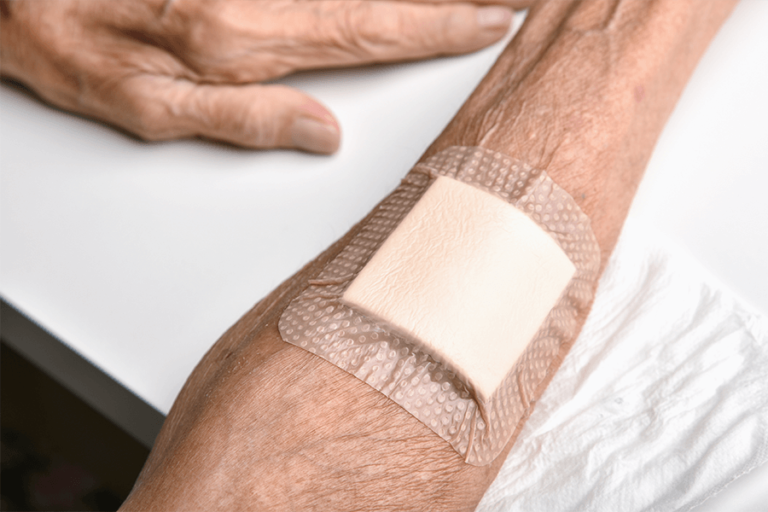How to Stay at Home With Home Health Care Technology
The allure of staying at home is nothing new, but in today’s society, more and more people are seeking to stay put for as long as possible. Whether it’s due to the high cost of living or a general desire to downsize and simplify, the trend is clear.
At-home care has been on the rise for years now, and this trend is only going to continue as technology advances make it easier for people to live independently.
In this blog post, we’ll explore some of the latest advancements in home health care technology that are making it easier than ever for people to stay at home.
More seniors are turning to home health options rather than other facilities, such as long-term care or nursing homes.
At-home care has become popular in part because it is less expensive than other facility options. In addition, at-home care allows seniors to maintain a higher quality of life while still receiving the services they need.
How can technology help healthcare?
Healthcare workers of the future will have to become experts in working with new technologies that are being developed by companies like Google or Amazon. These innovations, such as artificial intelligence (AI), virtual/ augmented reality(AR) and 3D-printing could all be used for medical purposes one day but they also might not come into use during your lifetime because we’re just at their infancy right now – so it’s important you stay on top what these developments mean for healthcare professionals who want job security through familiarity.
At-home care products allow people with chronic illnesses or disabilities to live comfortably in their own homes, while still receiving the services they need. People are comfortable asking for assistance from family members or friends who live nearby when needed.
For many years now, more Americans have been living alone than ever before – almost 30 percent as of 2016 according to Pew Research Center research data on this topic!
Vibrating treatments such as vibration therapy that offer promise without pills, are increasingly affordable and have been proven effective in numerous clinical studies to increase range of motion. They also reduce DOMS (delayed onset muscle syndrome), rehabilitate muscles quickly while improving bone density.
There are many ways to make staying at home possible with the help of technology. Home health care technology has come a long way in recent years, and there are now plenty of products on the market that can allow people to stay in their own homes while still receiving the services they need.
The homecare market
There are many reasons to invest in home health care, and one of them is that as the population ages it will become increasingly necessary. The demand for healthcare services increases due mostly from chronic diseases which older people suffer from at higher rates than younger generations do today.
The high incidence rate combined with an ever expanding aging cohort means there’s never been greater need or opportunity like this before.
Home care technology has made great strides in home health care over the past few years, making it easier and cheaper to provide quality care from afar. At-home care is becoming an increasingly popular option as a result, and this trend looks likely to continue.
One of the reasons for this shift is that many elderly people no longer see themselves as being “dependent.” They don’t want to be seen as a burden on their families or friends, so they often refuse help even if they need it.
Home health labor shortage
There is a critical shortage of workers in the at-home personnel industry, even though demand for these types of caretakers has increased. Home health aides ranked among America’s top 10 most popular jobs by 2024 according to federal projections from Labor Statistics
The home health care services market is huge and continues to grow. The largest share of this booming industry goes towards skilled medical practices that can provide patients with a comforting solution over residing in hospitals or nursing homes, as well as assisted living communities for those who need extra assistance but don’t want total dependence on others.
The global home health care market is segmented into cancer, respiratory diseases like asthma or COPD that affect the lungs. These conditions can cause difficulty breathing when not treated properly which leads to more serious complications such as pneumonia in some cases; mobility disorders resulting from an injury preventing you from walking without assistance – including helping with bathing needs so it’s important for these patients get around on their own again after treatment ends since they might need help cooking meals at times too.
The diabetes market is expected to grow at a CAGR of 7% over the next five years. This rise can be attributed in part by an increasing number and variety for diabetic patients who are looking into monitoring their blood sugar levels at home, which helps them arrive on track with treatment plans that include medications as well diet/exercise routines .
In addition, the increasing number of people diagnosed with diabetes has helped drive up sales around these home health care technologies since they’re more affordable than other options – such as staying at a hospital or nursing facility. At least that’s true when compared to those who don’t have insurance coverage like medicare/medicaid benefits available through work (or private plans).
The American Diabetes Association estimates there will be about 30 million patients living in America by 2020; this represents an increase from 28 million Americans currently living with type two diabetes today.
At best it means we’ll see more folks having access to better treatment options sooner rather later while on average 40% report experiencing symptoms related their condition every day due nearly 75% reporting some form of neuropathy.
With a rapidly aging population, the need for long-term care is becoming more prevalent. Patients suffering from chronic or acute respiratory illnesses are being handed advanced devices to treat them as well–this includes those who have been diagnosed with ESRD (end stage renal disease).
In summary
What does this mean for the average person?
It means that we are living longer and healthier lives. With technology becoming more portable, efficient, and affordable there is no reason why anyone should have to leave their home to receive quality health care.
In fact, according to a recent study published in The Lancet , patients who received dialysis treatments at home fared better both physically and emotionally than those who received treatment in a clinic setting. This is due, in part, to the fact that they were able to continue with their normal routines uninterrupted–including work and caring for loved ones.
The increased prevalence of diabetes and cardiovascular diseases is expected to lead a lucrative growth for diagnostics equipment in the coming years. The trend continues with an increasing number or patients who want screening process, coupled by technological advancements like microfluidics integration sensors Internet-of things (IoT) smartphones wearables that provide point care testing at home without needlessly placing pressures on healthcare professionals
That being said there’s always room service improve upon!








